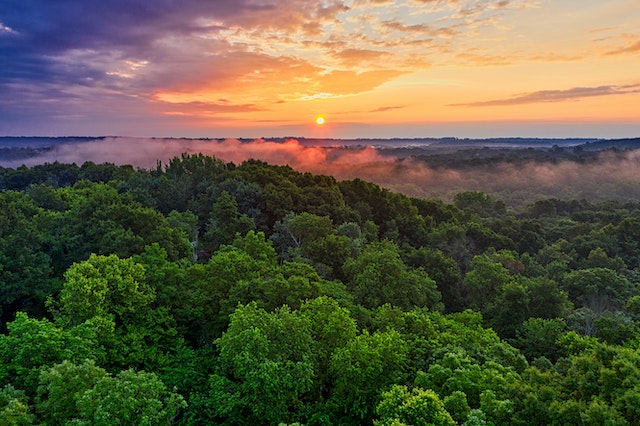
Why does it rain in a rainforest? Tropical rainforests cause rain when water is released by the trees, but temperate rainforests form where there is a lot of natural rain.
There are tropical rainforests and temperature rainforests. Tropical rainforests form in very hot places, just to the north and the south of the equator. Temperate rainforests grow in cooler areas, in the northern and southern hemispheres. When we talk about rainforests, we are usually thinking of tropical rainforests, so let’s look at those first.
Tropical rainforests grow in warm conditions, so they are not found any further than 10 degrees north or south of the equator. When the Earth rotates, the equator is the point that is directly in line with the sun and receives the most solar energy, making it hotter. As the distance increases away from the equator, the angle of the sunlight declines, reducing the amount of solar energy, reducing the heat. Tropical rainforests need an average monthly temperature of over 18℃.
A tropical rainforest is made up of very tall trees with a broad canopy. The canopy is very thick, so the trees try to grow taller to compete with each other for sunlight. Because this thick canopy blocks out 98% of the sunlight, not much can grow below it and a rainforest is surprisingly empty of smaller plants. The trees only have thin branches because there is no point in having leaves beneath the thick canopy, so they don’t need to support any weight. There are vines that can grow up the trees to reach the sunlight, but that is about it. On the floor of the rainforest, there are some plants that have evolved to photosynthesize without much light and rotting leaves. If you find a river or something that cuts through the rainforest and reduces the canopy, you will find a thick jungle.
The rain in a rainforest comes from transpiration, which is the loss of water in the form of water vapor from the leaves of the tree. All of the leaves on trees have stomata, which are tiny holes. The tree is able to open and close the stomata. In order to make energy, plants need to photosynthesize, and that requires carbon dioxide, water, and sunlight. The stomata open to let carbon dioxide into the leaf. The energy from sunlight is absorbed by the green chlorophyll. Water is taken up by the roots. The sunlight energy is used to take electrons from the water and pass them to the carbon dioxide. That changes the water into oxygen, which is released, and the carbon dioxide into glucose, which is stored. Transpiration happens when the stomata are opened to let in carbon dioxide. Near the equator is so hot that water starts to evaporate from the leaves the second that the stomata are opened. This water vapor rises into the sky, where it forms rainclouds. When too much water vapor for the air to support accumulates, it falls as rain. A small group of trees wouldn’t lose enough water to make rain, but rainforests have billions of trees. The Amazon rainforest causes 70% of all the rain in Brazil. This is one of the many reasons why it is not a good idea to cut the forests down. Plants in dry areas have to manage their water loss, but trees in a rainforest don’t have to worry because they know that more rain will fall.
A temperate rainforest is an entirely different type of forest. They grow in the temperate regions on Earth, which are between the Tropics of Cancer and Capricorn and the polar regions. These are very large areas. Tropical rainforests produce their own rain, but temperate rainforests live in areas that already have a lot of rain. These areas are usually by the oceans and they very often have mountains on one side. Water evaporates from the sea and forms clouds. The clouds blow in over the land and they have to rise as the air goes over the mountains. The air cools as it rises and cooler air cannot hold as much water as warmer air, which means the water falls as rain this side of the mountains. The forests are much cooler than tropical rainforests, so the trees don’t grow as fast. However, the cooler temperature slows down the rate of decomposition, meaning there is a much thicker biomass on the soil. The trees and plants in the temperate rainforest can use this biomass to grow for much longer than trees in the tropical rainforests could. The giant redwood is a good example of this. And this is what I learned today.
Photo by Tom Fisk: https://www.pexels.com/photo/aerial-photography-of-green-leafed-trees-2739666/
Sources
https://earthobservatory.nasa.gov/biome/biorainforest.php
https://en.wikipedia.org/wiki/Temperate_rainforest
https://en.wikipedia.org/wiki/Temperate_climate
https://rainforests.mongabay.com/kids/elementary/402.html
https://education.nationalgeographic.org/resource/rain-forest/
https://en.wikipedia.org/wiki/Tropical_rainforest
https://education.nationalgeographic.org/resource/photosynthesis/
